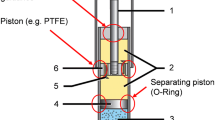Abstract
Shimmy is the phenomenon of intensive angular self-excited vibrations of a vehicle wheel. Such self-excited vibrations seriously threaten the safety ofmotion, which explains scientists’ profound interest in this phenomenon. This problem is most serious for the front wheels of aircraft. Tyre deformation is usually viewed to be the main cause of shimmy. Without casting doubt on this point, we still note that this is not the only cause. The shimmy phenomenon can also be observed in everyday life and for various hand carts, where any reference to tyre elasticity is most often irrelevant if the wheels are rigid.
We show that the polycomponent dry friction theory can completely explain the shimmy phenomenon for absolutely rigidwheels and hence polycomponent dry friction is at least one of its causes in the general case.
Dry friction has been neglected by scientists when explaining shimmy because dry friction theory has not been sufficiently well developed until recently; at the same time, shimmy cannot be explained in the framework of earlier conceptions.
Similar content being viewed by others
References
V. S. Gozdek, “Reaction of the Ground on a Vibrating RollingWheel with an Elastic Tire, ” Dokl. Akad.Nauk SSSR 186(5), 1031–1033 (1969) [Soviet Phys. Dokl. (Engl. Transl.) 14, 536 (1969)].
M. V. Keldysh, “Fore Wheel Shimmy of a Three-Wheel Landing Gear, ” in Selected Works. Mechanics (Nauka, Moscow, 1985), pp. 491–530 [in Russian].
K. S. Kolesnikov, Self-Excited Oscillations of the Car Steering Wheels (Gostekhizdat, Moscow, 1955) [in Russian].
J. Medzorian, “An Investigation of Landing Gear Shimmy: Tire Models, Tire Test Methodologies, Analysis and Parameter Studies, ” in 1999 World Aviation Conf. San Francisco, CA (1999), Docum. No. 1999-01-SS27.
H. B. Pacejka, Tyre and Vehicle Dynamics (Butterworth-Heinemann, Oxford, 2002).
Y. Rocard, Dynamique Général des Vibrations (Masson, Paris, 1949).
J. Svendenius, The Models for Use in Braking Applications (Department of Automatic Control, Lund Institute of Technology, Lund, 2003).
I. G. Goryacheva, Mechanics of Friction Interaction (Nauka, Moscow, 2001) [in Russian].
V. Ph. Zhuravlev, “On theModel of Dry Friction in Problems of Rigid Body Dynamics, ” UspekhiMekh. 3(6), 157–168 (2005).
V. Ph. Zhuravlev and D.M. Klimov, “On the Dynamics of the Thompson Top (Tippe Top) on the Plane with Real Dry Friction, ” Izv. Akad. Nauk.Mekh. Tverd. Tela, No. 6, 157–168 (2005) [Mech. Solids (Engl. Transl.) 40 (6), 117–127 (2005)].
V. Ph. Zhuravlev and D. M. Klimov, “The Causes of the Shimmy Phenomenon, ” Dokl. Ross. Akad. Nauk 428(6), 761–764 [Dokl.Phys. (Engl. Transl.) 54 (10), 475–478 (2009)].
Author information
Authors and Affiliations
Corresponding author
Additional information
Original Russian Text © V.Ph. Zhuravlev, D.M. Klimov, P.K. Plotnikov, 2013, published in Izvestiya Akademii Nauk. Mekhanika Tverdogo Tela, 2013, No. 5, pp. 13–23.
About this article
Cite this article
Zhuravlev, V.P., Klimov, D.M. & Plotnikov, P.K. A new model of shimmy. Mech. Solids 48, 490–499 (2013). https://doi.org/10.3103/S0025654413050026
Received:
Published:
Issue Date:
DOI: https://doi.org/10.3103/S0025654413050026




